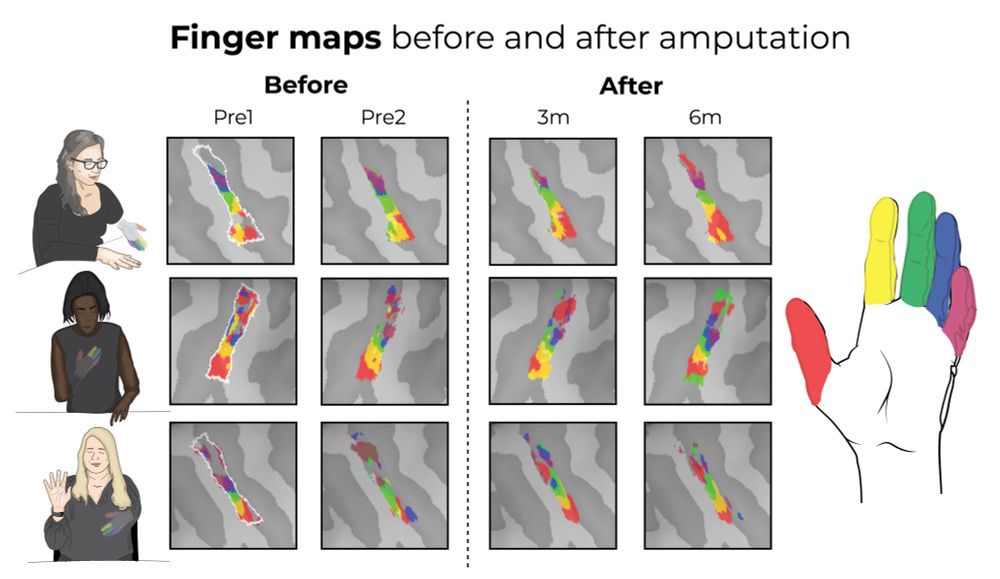
Assistive technologies and neuroplasticity | NIH BRAIN Initiative postdoctoral fellow in the Collinger lab at the University of Pittsburgh | Prev: UCL and NIMHgov | 🏳️🌈
We can perform this winner-takes-all analysis to replicate this supposed remapping, if we ignore the missing hand (red) and assign the territory to the next winner: lips (blue) or feet (green)

We can perform this winner-takes-all analysis to replicate this supposed remapping, if we ignore the missing hand (red) and assign the territory to the next winner: lips (blue) or feet (green)


BCIs from #Neuralink and #BlackrockNeurotech work well for people with spinal cord injuries. Our findings suggest the sensory-deprived representations they tap into will remain stable despite long-term loss of a sensory input
🧵16/18
BCIs from #Neuralink and #BlackrockNeurotech work well for people with spinal cord injuries. Our findings suggest the sensory-deprived representations they tap into will remain stable despite long-term loss of a sensory input
🧵16/18
🧵14/18

🧵14/18
We see no unique differences in the hand or lip maps of our participants relative to this chronic group.
🧵13/18

We see no unique differences in the hand or lip maps of our participants relative to this chronic group.
🧵13/18
From the lip data, we see the lips do not remap into the hand region. The patients show no unique changes vs able-bodied controls in magnitude or spread of lip activity in S1 post-amputation
🧵12/18

From the lip data, we see the lips do not remap into the hand region. The patients show no unique changes vs able-bodied controls in magnitude or spread of lip activity in S1 post-amputation
🧵12/18
🧵11/18

🧵11/18
🧵10/18

🧵10/18
🧵9/18

🧵9/18
🧵8/18

🧵8/18
🧵7/18

🧵7/18
🧵6/18

🧵6/18
Also, 16 able-bodied controls were scanned 4 times, over 6 months.
🧵5/18

Also, 16 able-bodied controls were scanned 4 times, over 6 months.
🧵5/18
🧵4/18
🧵4/18
🧵3/18
🧵3/18
🧵2/18

🧵2/18
What happens to the brain’s body map when a body-part is removed?
Scanning patients before and up to 5 yrs after arm amputation, we discovered the brain’s body map is strikingly preserved despite amputation
www.nature.com/articles/s41593-025-02037-7
🧵1/18
What happens to the brain’s body map when a body-part is removed?
Scanning patients before and up to 5 yrs after arm amputation, we discovered the brain’s body map is strikingly preserved despite amputation
www.nature.com/articles/s41593-025-02037-7
🧵1/18




